How to Improve Bottled Barbecue Sauce
A guide to tweaking store-bought sauces, along with several recipes to inspire your creativity.
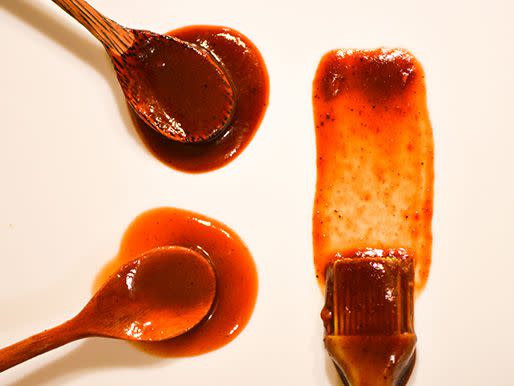
Serious Eats / Joshua Bousel
I'm open with proselytizing homemade barbecue sauce—I contend that what comes out of the kitchen is likely to kick the ass of most bottled sauces any day. Conversion doesn't come easy, though. I know that when it comes to choosing a long list of ingredients and a half-hour cook time versus a five-minute trip to the store with a few dollars for the bottled stuff, the latter usually wins out. So I've been thinking it's time to find a middle ground, a compromise that mixes the convenience of store-bought sauce with some the inventive qualities of homemade.
On Bottled Barbecue Sauce
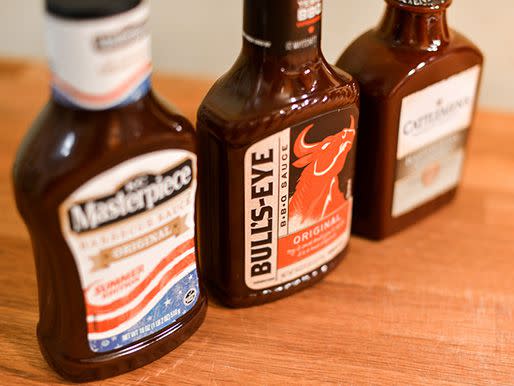
Serious Eats / Joshua Bousel
So what's my problem with bottled sauces, anyway? In a nutshell, if you can find a great one, nothing at all, but great is hard to come by. What you get at the standard grocery tends to run the gamut from horrid to acceptable, and stops there.
The average sauce is made to fit a preconceived flavor profile of sweet, tangy, smoky, and sometimes spicy. Making sauces that fit this narrow equation and try to stand out at the same time means most companies push the envelope a little too far with one flavor or another, churning out sauces that tend to be overly sweet or acrid from too much liquid smoke. That doesn't necessarily mean they're all bad—there are some low-cost sauces out there that are decent (check out our taste test)—but at the same time, I find that they neither wow nor inspire like a really awesome sauce can.
Thus the idea for this post was borne: What if you took a few of these middle-of-the-road sauces and quickly gussied them up to become worthy of serious eaters? You'll get the cost and time savings of a bottled sauce, with the creativity and impressiveness of something whipped up from scratch.
Incremental Improvements
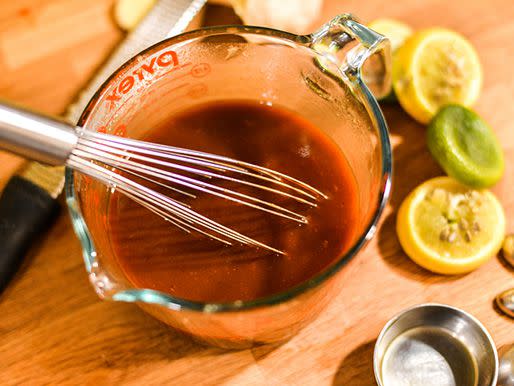
Serious Eats / Joshua Bousel
I set a few guidelines for myself when setting out to do this. First, I wanted to pick three readily available sauces that rang in under three dollars and didn't totally suck. Second, I'd start with trying to improve the sauce with only four ingredients, and build upon that if I felt like it really needed more for me to be able to endorse as a quality recipe. Third, they all had to be non-cook, ready to assemble in mere minutes.
I also considered whether I should make each sauce a more exemplary tomato-based barbecue sauce, or to alter the flavor profile to make them each pretty distinct. While trying to perfect the right balance of standard sauce flavor would probably be a bit more challenging, it didn't seem like as much fun as tasting each sauce and figuring out what could be good compliments, contrasts, and enhancers to turn it into something new and exciting.
I decided to give each sauce distinct traits, but if you prefer to just fix up their flavor, you can take these standard ingredients and tinker away:
Vinegars: These can help balance the sweetness of the standard off-the-shelf sauce. Apple cider vinegar is most common in barbecue sauce, but rice vinegar can do the job nicely without being so heavily tart. You can also look to citrus fruit for acidity as well.
Hot sauces: I like a bit of kick to my barbecue sauce, and this is something the most common sauces lack. A hit of Texas Pete or a habanero sauce can go a long way toward adding depth and spice to an underwhelming sauce.
Sugars: The standard sauce tends to be pretty sweet to begin with, so sugar may not be necessary, but if the sauce is too spicy or tart, you can try adding brown sugar, molasses, and/or honey to even things out.
Spices: With big bold flavors, the subtly of spices in bottled sauces tends to get lost. Adding garlic or onion powder are standard flavors for barbecue, but get a little creative and try out different chile powders, peppers, cumin, or dried herbs to add body to the sauce.
Cattlemen's Chipotle Orange
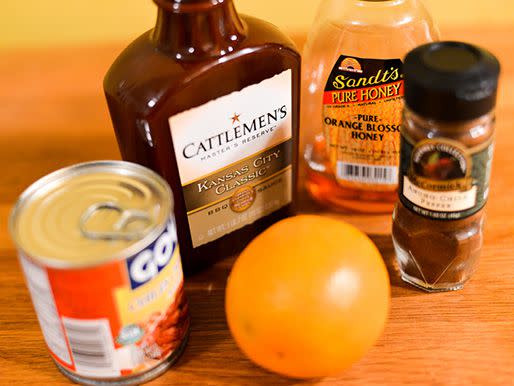
Serious Eats / Joshua Bousel
The first sauce I picked up was Cattlemen's, which had a pretty tangy tomato base with a light molasses depth and a medium smokiness. It was less sweet and a little more earthy than the other two sauces, and I thought this would be enhanced well by smoky and spicy chipotles in adobo. To that I added in a standard compliment to chipotles—orange juice. Only two ingredients in, and this was already a vast improvement, but it was lacking contrast. I found the balance with sweet honey plus a little extra something to make it feel special—ancho chile powder. Only four ingredients later, and this sauce had a complexity of heat, sweetness, and tang way beyond what first came out of the jar.
List Link: Quick Chipotle-Orange Barbecue Sauce Recipe
KC Masterpiece Korean

Serious Eats / Joshua Bousel
KC Masterpiece may be one of the most ubiquitous barbecue sauces out there. Its super sugary base has a strong molasses component, which is paired with only a slight tang and mild spice. I really wanted to challenge that overpowering sweetness, so I turned to the fermented flavors of Korean sauces to help. I added in both ssamjang and gochujang to lend a strong earthy heat.
That wasn't enough, though—the sweetness still needed to be put into check with the addition of rice vinegar. Even then it felt like something was missing, a problem that salty soy sauce, a splash of fish sauce, and a tiny amount of sesame oil took care of. This was my favorite of the three recipes I made, and if you're looking to give your cookout a distinct twist, I recommend trying out this combo.
List Link: Quick Korean Flavored Barbecue Sauce
Bull's-Eye Fruity Citrus
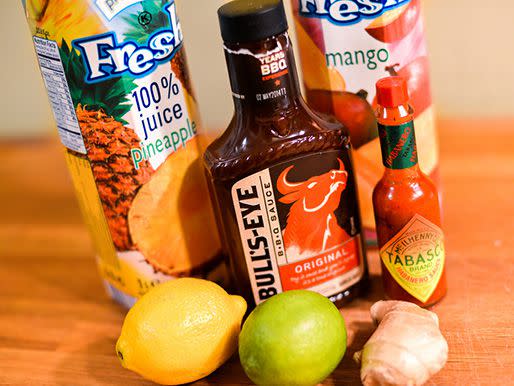
Serious Eats / Joshua Bousel
The last of the sauces was Bull's-Eye, which fared better than others in the Serious Eats taste test. It's another sweet sauce with bold flavor thanks to generous portions of vinegar and liquid smoke. This thick sauce can easily be thinned out, and I thought a mix of fruit and citrus juices would accomplish that well, while also changing its flavor profile.
I added pineapple, mango, lemon, and lime juice to give the sauce a fruity blended flavor that instantly dialed back the intensity of Bull's-Eye. It didn't quite feel rounded out, though, so I threw in a bit of honey, grated ginger, and a habanero hot sauce to get this recipe all the way there. That was more ingredients than I originally wanted to go for, but in the end, it was worth it, as the habanero added a much-needed heat that played well against the fruit juice, while the ginger lent a bite that made this a well-layered sauce.
List Link: Quick Fruit and Citrus Barbecue Sauce
It goes without saying that this is just the beginning of what's possible. I'm hoping that with some low-impact examples on how to make bottled barbecue sauces even better, people will see the light on how going homemade holds so much more promise and convert over to my side. Still, even if they don't, I'm content knowing that at least a few backyard barbecuers on Labor Day weekend will try experimenting with their bottled sauces and offer guests an improved barbecue experience.
Happy grilling Serious Eaters!
August 2013
Read More
Read the original article on Serious Eats.
